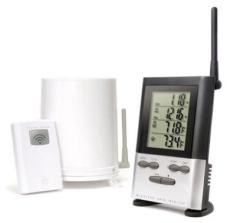

To analyze common water problems on golf courses you need to have first examined the soil profile as described in the previous section on soil analysis.
Here are some common water problems that occur on most golf courses and
ways for you to investigate them yourself.
WET AREAS can occur for a variety of reasons. They can be caused by poor infiltration,
sprinkler problems like poor pressure or wrong nozzle types. They can also be caused by
many other factors. To be sure wet soils are present and at what depth they occur use a
Turf-Tec Moisture Sensor. If readings are over 75% in the soil profile, there is not
enough oxygen in the root zone for grass roots to breathe.
HYDROPHOBIC SOILS can occur for many reasons. To confirm if hydrophobic soils exist use a Turf-Tec Moisture Sensor. First examine the soil profile with a soil profile sampler to determine the depth of grass roots. Next adjust the Moisture Sensor to the root depth level and insert it into the soil. If readings are below 25%, there is not enough water in the soil for the grass roots to utilize.
New! Now included in the PGA's Tours "Course Conditioning Guidelines". Monitoring soil moisture insures consistency in playing conditions from one golf green to another.
| Turf-Tec Moisture Sensor | |
|
|
|
Turf-Tec Moisture Sensor -
MS1-W |
|
WET AREAS AND DRY AREAS typically occur when sprinklers are out of
calibration. After testing with the Moisture Sensor, if you notice differences in soil
moisture from one area to the next, you probably should perform a sprinkler uniformity
test.
Testing sprinkler precipitation and uniformity can be done easily by using Turf-Tec
Precipitation and Uniformity Gauges. This set of 20 gauges is spaced evenly between two
irrigation heads and the sprinklers are turned on for 15 minutes. Inspect each gauge to
determine how much water is applied and also how uniform the coverage is between the
heads. Sprinkler uniformity is the key to having healthy golf greens, tees
and fairways as it will eliminate wet spots and dry spots from developing and
insure optimum turfgrass quality and health. Too often when nozzles are
changes and irrigation heads and pipes are repaired or replaced, uniformity
suffers. Use the Turf-Tec
Precipitation and Uniformity Gauges to determine how
your irrigation is really being applied and in what quantity.
| Turf-Tec Precipitation and Uniformity Gauges |
|
|
Turf-Tec Precipitation Uniformity Gauges
- PUGS2 |
TURFGRASS DISEASE AND POOR INFILTRATION are closely related. "Mold
doesn't grow on dry bread" is a quote Tom Mascaro always used to recite about
turfgrass disease. If infiltration rates are below eight inches per hour disease is
likely. If infiltration falls below six inches per hour, the situation is very critical
and immediate action should be taken to prevent the loss of turf.
Infiltration rate is also a good indication of when it's time to aerify. Baseline
Infiltrometer readings will give a good indication of your rate of infiltration. When
those baseline readings fall 10% or more, then it is time to aerify. In addition, the
amount of water that is being applied by the sprinklers, obtained in step two, will allow
you to compare the amount of water applied with the amount of water that has infiltrated
into the soil to avoid runoff and maximize water intake into the soil.
Infiltration can be taken by two different types of Infiltrometers, the Turf-Tec Infiltrometer and the Turf-Tec Infiltration rings.
Poor infiltration also causes anaerobiosis or black layer to develop. Click here to read an excellent article on Infiltration in a past issue of the Turf-Tec Digest.
| Turf-Tec Infiltrometer | Turf-Tec Infiltration Rings |
|
|
|
Turf-Tec Infiltrometer - IN2-W |
Turf-Tec Infiltration Rings - IN5-W |
Step 4:
Analyzing plant water usage
Once moisture sensing and infiltration readings have been established, and irrigation efficiency has been assured, the next step is to coordinate your irrigation system with the actual turfgrass water consumption. This can be accomplished by using an ET Gauge or Evapotranspiration Gauge. This model represents actual amounts of water that have been utilized by the turfgrass plant over the past 24 hour period. ET can be measured and then using a proven formula, the amount of water that the turfgrass has used can be calculated and re-applied by the irrigation system. In addition ET should be compared to rainfall when calculating ET Rates. The Rain-O-Matic allows quick daily rainfall readings in a simple unit.
| ET Gauge | Turf-Tec Wireless Rain Gauge |
|
|
 |
ETG1-W - ET Gauge |
ROM3-W - Turf-Tec Wireless Rain Gauge Click here to see this item in the Turf-Tec Virtual Catalog |
Click here to go to next page.
Click here to go to the Turf-Tec Virtual Catalog with pictures.
1471 Capital Circle NW, Suite # 13
Tallahassee, FL. 32303
Order Line (800) 258-7477
Phone (850) 580-4026
Fax (850) 580-4027
Home / Search Site / Catalog
/ Online Ordering / Map of site / Newsletter
/ On line consult / Contact us
History / Web Designs / Request Catalog / Search Engines
*Copyright 2007